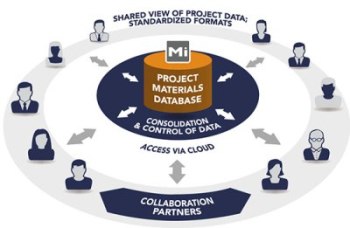Aug 31 2015
Granta Design today announced GRANTA MI:Collaborate, a cloud-hosted software package that makes it easy for multi-partner collaborative projects to develop, manage, and use materials knowledge.
 GRANTA MI:Collaborate enables project partners to share and access materials data in a secure, controlled manner.
GRANTA MI:Collaborate enables project partners to share and access materials data in a secure, controlled manner.
This solution is based on Granta’s extensive experience of partnering in projects such as the European Union-funded AMAZE Additive Manufacturing project, or the HITEA industry consortium on replacing hazardous coatings in aerospace. Such projects typically require specialist materials property data to be shared between partners, with appropriate access controls, so that partners can aggregate data, analyse it, and benefit from the resulting combined knowledge. It can also be important to ensure value retention after the project by making data and results available to key stakeholders or the public. Such management of intellectual property is increasingly mandated by funding bodies. MI:Collaborate addresses these issues.
MI:Collaborate uses technology from GRANTA MI™, the leading software for materials information management in engineering enterprises. A supported project is provided with a cloud-hosted version of the GRANTA MI database system and assistance to modify the database structure in order to handle the specifics of its project data (e.g., results from materials testing or material models for use in simulation). Ready-made database templates for applications such as metals, composites, restricted substances, and additive manufacturing speed this process. Simple web tools allow users to upload, search, and browse data, while robust security ensures users only see data for which they are authorized. As standard, the package supports hosting of data for 10 years after the project—alternative arrangements can be agreed.
This straightforward combination of software and services, together with a cost-effective pricing scheme, means that it is easy to incorporate MI:Collaborate into project proposals being submitted to funding bodies—for example, to national agencies such as the US National Science Foundation, or to transnational programs such as the European Union’s Horizon 2020.